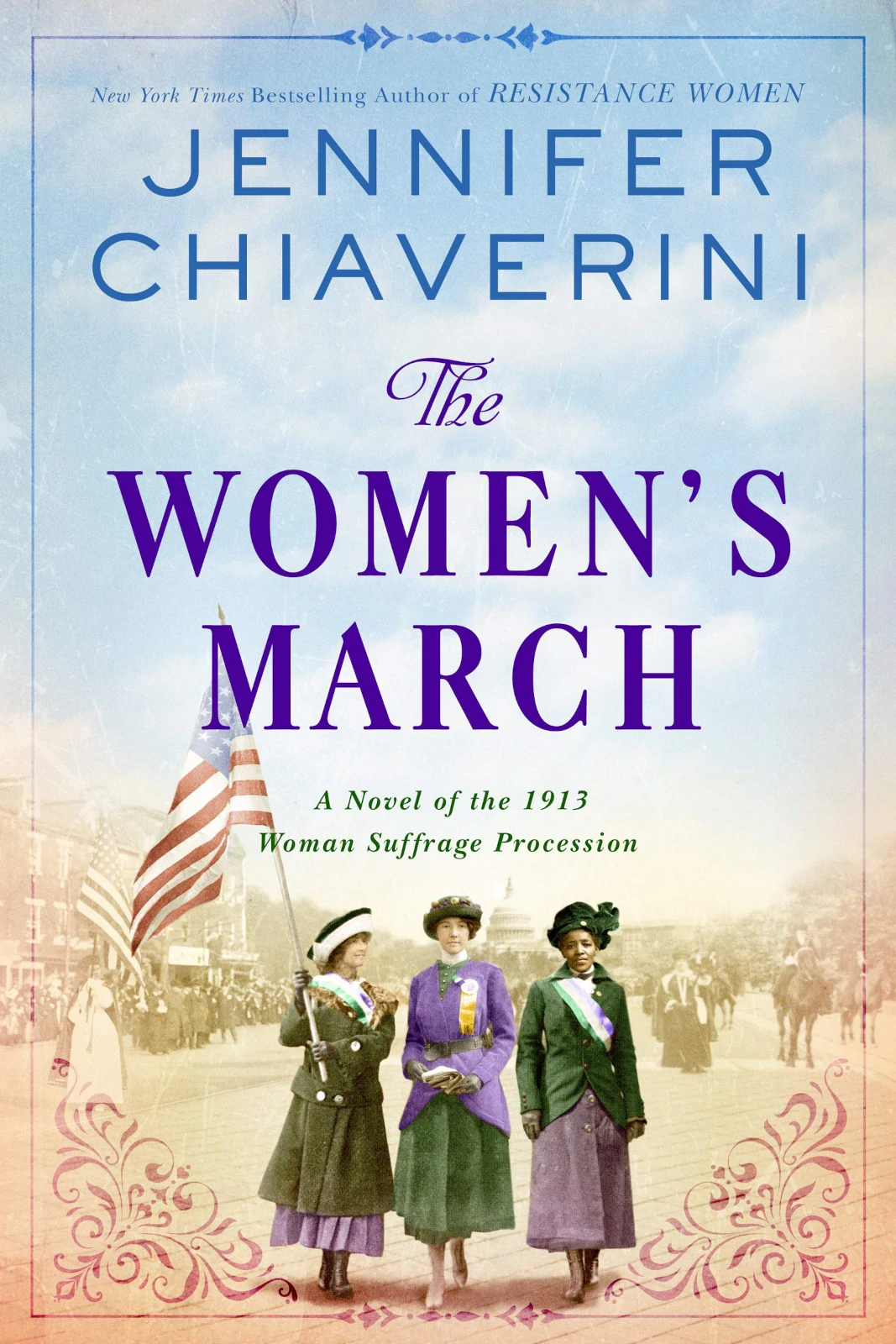
A review of The Women’s March by Jennifer Chiaverini
Words By Ally Geist
Published July 27, 2021 by William Morrow
As a lover of historical fiction and a feminist, I was so excited to read this book. The Women’s March: A Novel of the 1913 Woman Suffrage Procession was thoroughly researched and well-rounded—a total pleasure to read. Though I’m Canadian, the American suffrage movement helped pave the way for my own right to vote, and so much of our countries’ histories are intertwined. While I’d heard stories about suffragists before, I’d never been able to get inside their heads and experiences—until I opened this book.
Jennifer Chiaverini has given readers an excellent story depicting the nuances of the suffrage movement, intersectionality, and the different challenges various groups of women faced while achieving the right to vote. So often, the American history that is taught in schools excludes women of color and their stories, yet they played a crucial role in shaping the rights we have today. By portraying characters’ intersectional experiences with sexism, racism, and classism, the book is not only richer but more historically accurate. Chiaverini didn’t shy away from depicting the hard truths and rougher parts of the suffrage movement. I learned a lot from reading the book, which is exactly why I love historical fiction. I appreciated how the book gave readers a glimpse into the nitty-gritty details of planning the march (right down to the colors of individual marchers’ uniforms), and the drama that went on behind the scenes of such an event.
I also admired the variety of perspectives offered throughout The Women’s March. Ida, Maud, and Alice give readers a unique insight into the frustrations, mundane elements, setbacks, triumphs, and range of emotions experienced during the women’s suffrage movement. Alice’s experience fighting for suffrage in Great Britain—facing imprisonment and hunger strikes—colored her approach to suffrage in the US. Maud’s experience as a working woman and her notoriety for interrupting politicians’ speeches with pointed questions gave readers insight into the working-class fight for suffrage. Ida’s strength and determination as someone born into slavery and fighting for both racial justice and women’s suffrage added complexity to the conversation that history classes so often gloss over. The stakes of women’s suffrage are different for all three women, and we see them pave the way for a movement that includes people of many backgrounds and experiences united against a common goal. The book brought to light many details that we don’t discuss anymore, such as how suffrage movements were originally state-by-state and that a vote on women’s suffrage could only occur every ten years in some states. It also depicted challenges that, unfortunately, still largely persist today, particularly when it comes to racial injustice. The book was empowering, insightful, and interesting. Though the action is more of a slow drip than an intense battle scene, I would recommend it to historical fiction buffs
While I thoroughly enjoyed The Women’s March, there were a few elements of the novel that needed refining. At times, the narrative felt a bit choppy as the story pulled readers in three different narrative direction. But I wouldn’t have wanted to miss out on Maud, Alice, or Ida’s perspectives. However, I did find myself skimming earlier passages to remind myself where each character’s storyline was at. The suspense was so great that I wasn’t as interested in the smaller details on the page—I found myself wanting to skip ahead or skim pages to get to the action. That being said, I appreciated the lasting tension Chiaverini created—clearly, she had me hooked! While melding the three stories together did cause some confusion at times, their story arcs were well-rounded and exciting. Each woman’s story could have been a stand-alone piece, but weaving them together allowed readers to understand the complex fight for women’s suffrage. By following these three characters for so long, and getting to know them intimately, it becomes even more exciting for readers to see them eventually meet at the march.
One of the most striking layers of complexity in The Woman’s March was learning how various Suffrage groups disagreed on the approach they should take as advocates—disagreements that ranged from what level of government to target, to class divisions, state divisions, and racial injustice. Ida’s story was particularly outstanding to me, and I appreciated the care the author took with her narrative to show readers how much harder she had to fight, the discrimination she faced, and how the stakes for women’s suffrage differed for Black and other marginalized people. This perspective adds weight to the cultural understanding of our shared history. The more society unpacks concepts of intersectionality, racism, sexism, and elements of identity, the more we also need to look into the past and add to the edited version of history taught in schools.
Overall, The Woman’s March was a rich, complex glimpse into the women’s suffrage movement. Upon closing the pages, I saw history from a different perspective, and I appreciate the opportunity to step into Ida, Alice, and Maud’s shoes for a few hundred pages. I’d definitely recommend the book to anyone interested in historical fiction, social justice, or women’s rights, particularly if you’re looking for an intersectional way to consider history. Each of the three protagonists were relatable—even though I’ll never share some of their experiences, getting to walk in their shoes for a while was incredibly moving. I appreciate the opportunity Jennifer Chiaverini has given me and other readers to take a march through our predecessors’ stories, giving us powerful moments to consider along the way.